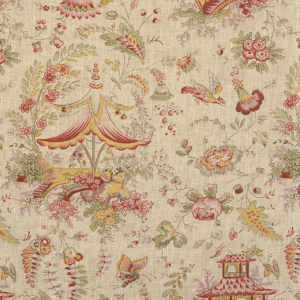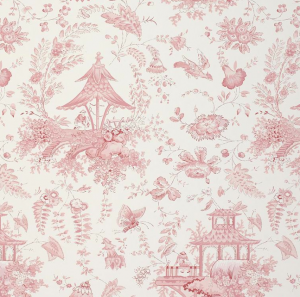The "Ask Alice" column is always a favorite. Written by Alice Guercio, a 15-year Kravet veteran who is Vice President of Product Coordination, the column shares her expertise on specific fabrics. Maybe it was all of the Fashion Week happenings in NYC last week, but we found ourselves thinking of Chinoiserie. Turns out Guercio had already offered this distillation of its rich history, which we wanted to share:
"Recently I attended a meeting in which one of my colleagues told us all about the origin of chinoiserie. As he was telling the story to others in the room, I saw how they were enjoying his animated story of its history and I thought it would make a wonderful column.

The Western fascination with all things Oriental began in the mid 17th century with trade between Europe and China. Imported arts and crafts had an exciting and different beauty from those made in the west, especially Chinese porcelain and lacquer. In the early 18th century, the term “chinoiserie” was used to describe the European fantasy vision of China and the Far East. It is actually a French word for “Chinesery” or “Chinese-esque.”
It is an invented fusion of Asian motifs and European sophistication created by designers and craftsmen in the West. Since they knew little about far-off Asian cultures due to limited exposure, early chinoiserie is characterized by the use of imagery of a China that could only be imagined with pagodas, fabulous birds, monkeys, dragons and figures in exotic costumes. Decorative scenes may show a mythological creature in an oriental landscape, or an elegant lady with a Chinese parasol and Parisian hairstyle. Chinoiserie is often eccentric but most of all it is a fun mixture of fact and fiction of what seemed incredibly exotic to the people of Europe.

This new playful style was popularized when the French court of Louis XV found the curves and whimsy of chinoiserie integrated beautifully with Rococo architectural features. It soon spread throughout Europe and could be found in the interiors and gardens of the royal palaces.
It is fascinating to learn how an interpretation from a world away many centuries ago turned into the exotic, stylish and often peculiar fashion called chinoiserie. I encourage you all to dig deeper into the history because I have only touched the surface; after all, there is only so much information I can put in my little column."
If you have a question about fabric for Alice, email her at askalice@kravet.com and it just may become the subject of a future article!
Shown throughout is Ralph Lauren Home's Chinoiserie Garden that Kravet distributes to the trade.
Stop by Kravet at the DDB (Suite 324), DCH (Suite 150), DCOTA (Suite B-180) and PDC (B624) and pick up your copy.

No comments:
Post a Comment